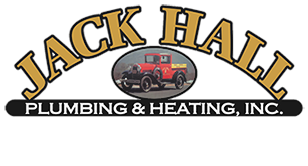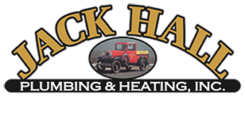If Jack Hall Heating & Plumbing sold an inexpensive new product that required no tools to install, took two minutes to replace, and was guaranteed to help prevent HVAC issues, improve air quality, and reduce your utility bill, would you buy it?
Well, unfortunately, Jack Hall doesn’t hold the patent on the HVAC filter. However, our team is aware that dirty filters can cause numerous issues, leading to a substantial repair bill. Here’s a quick guide on replacing your filter correctly and why it’s so important.
What Type of Filter Do You Need?
HVAC filters are easy to find in local big box stores, hardware stores, and through online retailers. While you want to steer away from budget filters, the real key is getting the size right. Pull the existing filter out of your HVAC unit, and you’ll find the dimensions on the edge of the cardboard frame (Save a photo on your smartphone so you can refer to it when you’re in the store trying to remember the size). Also, never run your system with an incorrectly sized filter. This allows contaminants to flow around the filter, causing what’s called “filter bypass.” It’s the chief culprit for clogged AC coils.
Locating the Filter
Most HVAC system designs make it clear where the filters are located, but it does vary depending on the type of unit that’s in your home. Look near the air handler for a small slot around 1-2 inches wide that the filter slides into or a removable panel or cabinet type door for larger-sized filters. If you’re having trouble finding the filter, you can always check the owner’s manual or even give us a call, and we’ll be happy to talk you through it.
How Often Should Filters Be Changed?
The general rule of thumb is that you should replace a 1-inch-thick HVAC filter every one to three months and a thicker 4- to 5-inch filter every six to twelve months. But there are variables that impact filter durability. If there are pets, people in the home with allergies or respiratory conditions, or smokers living in the house, more frequent changes will be needed. Try to get into the habit of checking the filter more frequently if any of the above apply to your home.
Understand the Air Flow Arrows
You’ve bought the correct filter, found where it goes in the unit, but you pulled the old one out without checking which way the air flow arrows were pointing. Don’t just flip a coin and stick the filter in. The arrows should ALWAYS point towards the HVAC in the direction of the air flow. Proper orientation is important because the unit will have to work harder to pull air through the filter if it’s installed incorrectly, which hurts efficiency and puts strain on the system.
Turn Off the HVAC During Filter Swaps
You don’t want the unit running during a filter change because when you remove the dirty filter, you stir up dust and dirt. If the system kicks on while you’re making the switch, these contaminants get sucked into the HVAC. Also, air pressure from a running fan makes it tricky to correctly orient the new filter, and you may even damage it when trying to get it into place. If your HVAC system has a built-in switch, flip it to the “off” position or you can turn it off at the thermostat.
Jack Hall’s HVAC Technicians Provide Top-Notch Service
When one of Jack Hall’s HVAC technicians visits your home for a maintenance or service call, you can be sure they’re going to check every critical component of your system, including the filter. Whether we’re making a repair, installing a new HVAC unit, or performing routine maintenance, our team takes pride in delivering outstanding customer service. Contact us today to learn more about our services and to schedule a free estimate.


